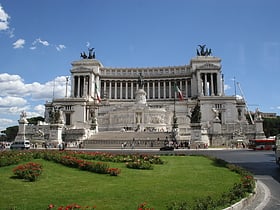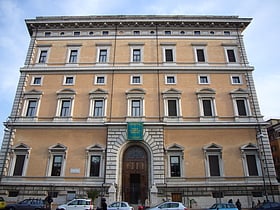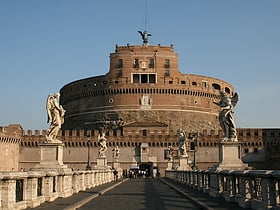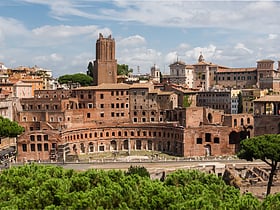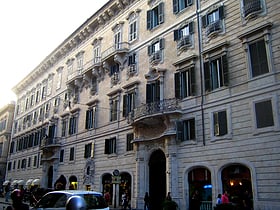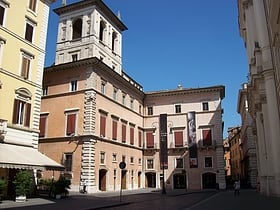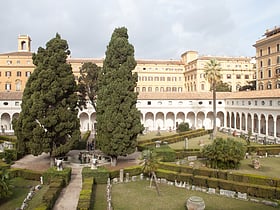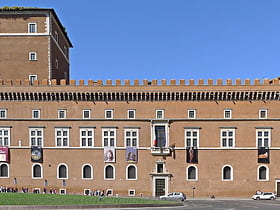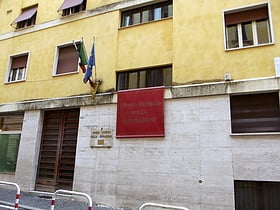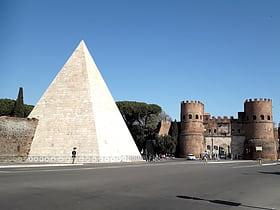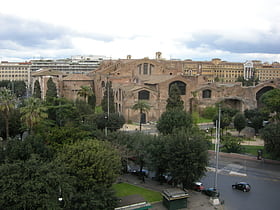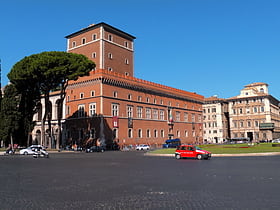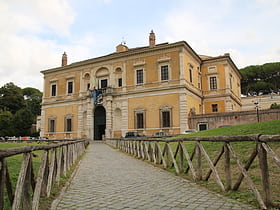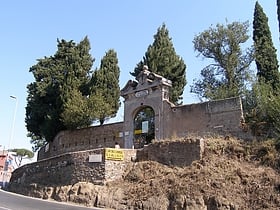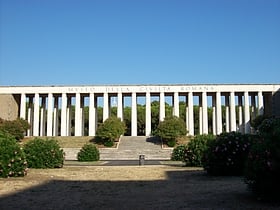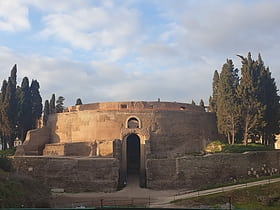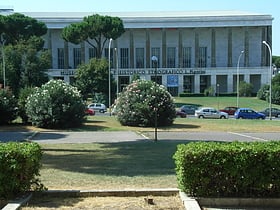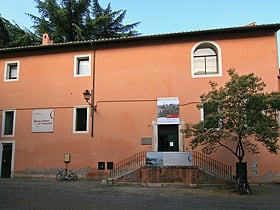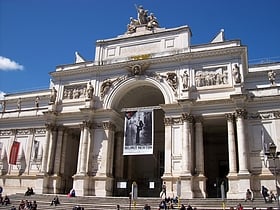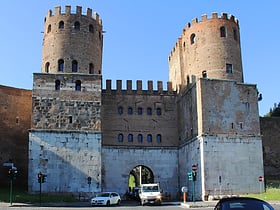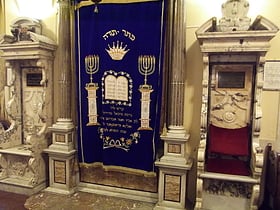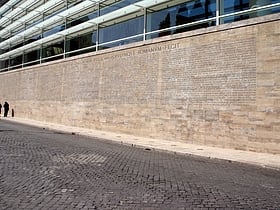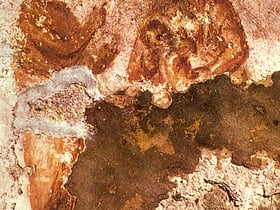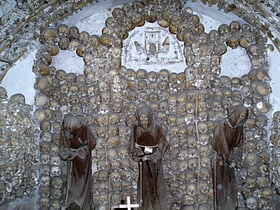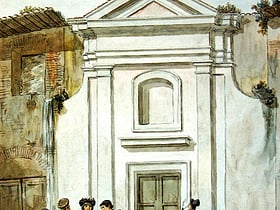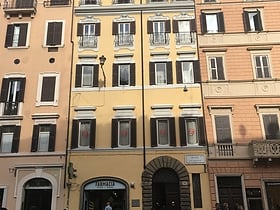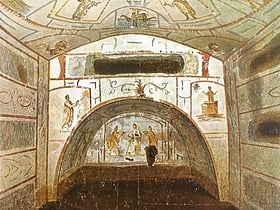Rome: History Museum
Places and attractions in the History museum category
Categories
- Church
- Baroque architecture
- Historical place
- Museum
- Palace
- Sacred and religious sites
- Vernacular architecture
- Architecture
- Street
- Art museum
- Ancient Roman architecture
- Ruins
- Fountain
- Park
- Monuments and statues
- History museum
- Square
- Bridge
- Temple
- Renaissance architecture
- Neighbourhood
- City gate
- Romanesque architecture
- Specialty museum
- Arch
- Theater
- Cemetery
- Catacombs
- Archaeological site
- Historic walking areas
- Concerts and shows
- Sport
- Sport venue
- Giacomo della Porta
- Hill
- Gianlorenzo Bernini
- Art gallery
- Tomb
- Francesco Borromini
- Shopping
- Natural attraction
- Archaeological museum
- Martino Longhi il Vecchio
- Unesco
- Carlo Maderno
- Library
- Carlo Rainaldi
- Spiritual
- Opera
- Arenas and stadiums
- Aqueduct
- Nature
- Modern art museum
- Mausoleum
- Obelisk
- Giovanni Battista Soria
- Giovanni Antonio De Rossi
- Tower
- Forts and castles
- Music venue
- Garden
- Golf
- Hotel
- Gothic Revival architecture
- Nightlife
- Baths
- Amusement park
- Memorial
- Shopping centre
Altare della Patria
White marble memorial monument The Altare della Patria, also known as the Monumento Nazionale a Vittorio Emanuele II, is a grand edifice that dominates Piazza Venezia in the heart of Rome, Italy. This colossal structure is an emblem of Italian national unity and a museum that pays homage to the...
National Roman Museum
The National Roman Museum stands as a testament to the grandeur of ancient Rome, offering a deep dive into the city's rich historical narrative. Established in 1889, this museum is a treasure trove of artifacts and exhibits that span the entire Roman civilization.
Vatican Necropolis
Beneath the gilded opulence of St. Peter's Basilica in Vatican City lies the Vatican Necropolis, a historical treasure trove shrouded in the sacred and the mysterious. This ancient cemetery, resting in the heart of Rome, Italy, is a subterranean labyrinth where...
Trajan's Market
Restored Roman city forum complex Trajan's Market, nestled in the heart of Rome, Italy, is a remarkable testament to ancient Roman engineering and commercial life. This sprawling complex, often considered the world's oldest shopping mall, was constructed between 100 and 110 AD during the reign of...
Palazzo Doria Pamphilj
Tours of opulent 18th-century apartments Nestled in the heart of Rome, the Palazzo Doria Pamphilj is a magnificent example of Italian nobility and artistry, transformed into a museum that houses one of the city's richest private art collections. The palazzo, with its grand architecture and opulent interiors...
Palazzo Altemps
Palazzo Altemps, formerly Palazzo Riario, is a historic building in Rome, designed by Melozzo da Forli; it stands a short distance from Piazza Navona, in Piazza Sant'Apollinare. It currently houses one of the four branches of the Roman National...
National Roman Museum
The National Roman Museum stands as a testament to the grandeur and sophistication of ancient Rome. Located in the heart of Italy's bustling capital, the museum is an essential destination for anyone interested in the rich history and culture of the Roman Empire.
Museo nazionale del Palazzo di Venezia
Nestled in the heart of Rome, the Museo Nazionale del Palazzo di Venezia is an emblematic cultural institution that offers a deep dive into the artistic and historical treasures of Italy. Housed in the stately Palazzo Venezia, a building with a storied past that dates...
Museum of the Liberation of Rome
Nestled in the heart of Rome, the Museum of the Liberation of Rome (Museo storico della Liberazione - Roma) stands as a solemn testament to the city's turbulent history during World War II. Located on Via Tasso, this museum is housed in a building that once served as...
Porta San Paolo
Porta San Paolo stands as one of the southern gateways to the heart of ancient Rome, Italy. This imposing structure once formed part of the Aurelian Walls, the defensive ramparts that encircled the city. Today, it is not only a testament to Rome's rich historical...
Baths of Diocletian
Nestled in the heart of Rome, the Baths of Diocletian stand as a monumental testament to the grandeur of Roman bathhouses and the architectural prowess of the ancient world. This historical complex, which now houses a museum, was the largest of its kind when it was...
Palazzo Venezia
Art museum in a 15th-century palace Nestled in the heart of Rome, Palazzo Venezia stands as a testament to the city's rich history and architectural grandeur. This imposing palace, with its distinctive Renaissance style, has been a fixture of the Italian capital since its construction in the 15th century.
National Etruscan Museum
The National Etruscan Museum is a museum of the Etruscan civilization, housed in the Villa Giulia in Rome, Italy.
Catacombe di San Callisto
Ancient Roman burial tunnels and crypts The Catacomb of Callixtus is one of the Catacombs of Rome on the Appian Way, most notable for containing the Crypt of the Popes, which once contained the tombs of several popes from the 2nd to 4th centuries.
Museum of Roman Civilization
The Museum of the Roman Civilization is a museum in Rome, devoted to aspects of the Ancient Roman Civilization. The museum has been closed for renovation since 2014.
Mausoleum of Augustus
The Mausoleum of Augustus is a large tomb built by the Roman Emperor Augustus in 28 BC on the Campus Martius in Rome, Italy. The mausoleum is located on the Piazza Augusto Imperatore, near the corner with Via di Ripetta as it runs along the Tiber.
Pigorini National Museum of Prehistory and Ethnography
The Luigi Pigorini National Museum of Prehistory and Ethnography is a public and research museum located in Rome, Italy. Established in 1876 by Luigi Pigorini, it is currently directed by Maria Antonietta Fugazzola.
Museo di Roma in Trastevere
The Museo di Roma in Trastevere was established in 1977 in the restored Carmelite convent of Sant'Egidio. It was initially known as the Museo del Folklore e dei Poeti Romaneschi.
Palazzo delle Esposizioni
The Palazzo delle Esposizioni is a neoclassical exhibition hall, cultural center and museum on Via Nazionale in Rome, Italy. Designed by Pio Piacentini, it opened in 1883.
Museo delle Mura
The Museo delle Mura is an archaeological museum in Rome, Italy. It is housed in the first and second floors of the Porta San Sebastiano at the beginning of the Appian Way.
Jewish Museum of Rome
The Jewish Museum of Rome is situated in the basement of the Great Synagogue of Rome and offers both information on the Jewish presence in Rome since the second century BCE and a large collection of works of art produced by the Jewish community.
Museo dell'Ara Pacis
The Museum of the Ara Pacis belongs to the Sistema dei Musei in Comune of Rome; it houses the Ara Pacis of Augustus, an ancient monument that was initially inaugurated on January 30, 9 B.C.
Catacombe di Priscilla
The Catacomb of Priscilla is an archaeological site on the Via Salaria in Rome, Italy, situated in what was a quarry in Roman times. This quarry was used for Christian burials from the late 2nd century through the 4th century.
Santa Maria della Concezione dei Cappuccini
Santa Maria della Concezione dei Cappuccini, or Our Lady of the Conception of the Capuchins, is a church in Rome, Italy, commissioned in 1626 by Pope Urban VIII, whose brother, Antonio Barberini, was a Capuchin friar. It is located at Via Veneto, close to Piazza Barberini.
San Pellegrino in Vaticano
The Church of San Pellegrino in Vaticano is an ancient Roman Catholic oratory in the Vatican City, located on the Via dei Pellegrini.
Giorgio de Chirico House Museum
The Giorgio de Chirico House Museum is a house museum in the 16th century Palazzetto del Borgognoni at Piazza di Spagna 31 in Rome. The house was acquired by Giorgio de Chirico in 1948. It was left to the state by his widow and opened as a museum in 1998. Only open by appointment, it is closed on Mondays and Sundays.
Catacombs of Marcellinus and Peter
The Catacombs of Marcellinus and Peter are found approximately three kilometers from southeast Rome and the ancient Via Labicana, and date to the 4th century AD.
Map

